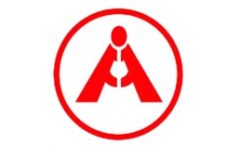Members might disagree on group goals, and subgroups and cliques may kind round strong personalities or areas of agreement. To get by way of this stage, members should work to beat obstacles, to just accept individual differences, and to work via conflicting concepts on staff tasks and objectives. When you can identify which improvement phase your groups are in, it’s much simpler to offer precisely the course they want in order that they really feel more targeted and connected.
Check out our e-book, The Art of The One-on-One Meeting, to see an in depth information on how one can build a culture of trust with common one-on-ones. At the ultimate stage of group growth, prioritize knowledge sharing. Encourage employees to share what they learned throughout their time as members of the team and talk about what may be improved in the future. If teams get via the storming stage, conflict is resolved and a point of unity emerges.
White-fairhurst Tpr Mannequin
For instance, if the group develops a model new work course of for bettering the shopper expertise, members may be asked to oversee the new and improved course of. It’s also identified as the transforming process and happens after the staff accomplishes what it set out to do. Afterward, it begins to dismantle itself in readiness for different duties. The adjourning stage is a time for each mourning and celebration. Mourning as a outcome of staff members are paring after forging deep relationships in the course of the project and celebration for a job properly accomplished.
During these meetings, evaluation the final weeks or months to rejoice staff wins and take an sincere take a look at what didn’t go to plan. Pinpoint where the group can advance transferring ahead and create a plan of action to help workers enhance sooner or later. In the adjourning stage, a lot of the team’s targets have been completed. The emphasis is on wrapping up final tasks and documenting the trouble and outcomes.

A staff’s efficiency is at peak capacity at this stage because everyone has realized to establish and leverage one another’s strengths for the widespread good. As the real work starts through the storming stage, interpersonal and technical challenges will seem. Leadership decisions, particular person work habits, and communication lapses through the storming stage can create pressure inside a staff. Team members must be taught to make use of conflict positively in order that it doesn’t slow or hinder their progress. The imposing personalities in the team will become evident at this stage, especially when members start to share ideas openly. Those who stand out begin to get accepted by their peers as potential leaders.
As a result, the team starts to function extra effectively and positive aspects momentum in the course of realizing the shared goals. Members turn out to be more comfortable with each other and understand the significance of utilizing their various perspectives to find sensible solutions to any challenges. The norming stage is when the whole group begins to work as a cohesive unit. By now, group members have discovered a technique for working together.
Efficiency Dashboards And Analytics Instruments:
When the five levels of team growth get successfully implemented, a sense of partnership and group is fostered. It’s finest to set clear expectations at each stage in order that the group has seamless alignment when continuing https://www.globalcloudteam.com/ to the next. As a team goes through the phases, particular person members study extra about their potential and the means to work dynamically as a part of a collective.
They are driven to succeed, which can cause some anxiousness as they get to know their peers and settle into the team’s culture. Employees at this stage are curious and should outwardly showcase their enthusiasm and ask plenty of questions. As individuals become acclimated to their new environment, leaders ought to work to create a clear group structure so everybody has an excellent understanding of their roles. Managers should also set expectations for team communication right now. Team improvement is how teams come together and arrange themselves to satisfy their goals. The five levels of staff improvement outline how group dynamics shift as work progresses and outline a path forward for leaders to support their workers.

This is the second stage of team development, the place the group begins to kind itself out and achieve each others’ belief. This stage typically begins after they voice their opinions; battle may arise between team members as power and standing are assigned. At this stage there could be typically a constructive and well mannered ambiance, individuals are pleasant to every other, and so they could have feelings of pleasure, eagerness and positiveness.
Communication And Collaboration Instruments:
And its success or failure very much hinges on the knowledge and skill of its management. When leaders enable groups to kind and develop with unrealistic expectations or too little oversight, bad things can happen. Conversely, when leaders recognize that every staff needs a while and TLC to grow right into a useful unit, good things are inclined to comply with. At the end of the project, arrange a web-based assembly the place team members come collectively to discuss the entire project, from the successes to the frustrations. Ask them to arrange examples beforehand outlining what worked and what didn’t, after which give every particular person 5 minutes to share their ideas.
- Later, during the norming and performing phases, norms concentrate on relationships and levels of performance.
- Tensions could run high at stage two, so leaders can guide their group by way of this time by scheduling thrilling team-building actions that foster understanding.
- Feedback is important to bettering your staff’s efficiency whereas navigating through the five phases.
- Clarity on the various avenues of communication permits group members to successfully get work accomplished, understand their roles, and know the place to search out the data they want about work.
- The 5 levels of group improvement define how group dynamics shift as work progresses and define a path forward for leaders to help their employees.
Review the five stages and our tips on fostering collaboration outlined on this article to convey out the best in your team throughout each section. Better but, use a collaborative meeting device like Fellow to build a wholesome team culture and manage your greatest ideas into actionable steps. Track aims as a part of your meeting workflow with our Objectives device. Clearly report, outline, track, and evaluation the progress of your objectives during team conferences.
The inner competitions prevalent at the storming stage have been rooted out. As a end result, the staff works extra efficiently as a outcome of members perceive what’s anticipated of them and know how to share their concepts and seek feedback. Our 500+ ready-to-use meeting agenda templates make it easy to host project kickoff conferences, brainstorming periods, and extra.
While working on a high-performing group could additionally be a truly pleasurable and growthful experience, it’s not the tip of group growth. There remains to be a necessity for the group to concentrate on each course of and product, setting new targets as applicable. Changes, corresponding to members coming or going or large-scale adjustments within the exterior setting, can lead a group to cycle again to an earlier stage. If these changes – and their ensuing behaviors – are recognized and addressed directly, teams might successfully stay in the Performing stage indefinitely. Team Tasks through the Storming stage of development call for the group to refocus on its goals, maybe breaking larger goals down into smaller, achievable steps.
In the norming stage, consensus develops around who the leader or leaders are, and individual member’s roles. Interpersonal variations start to be resolved, and a way of cohesion and unity emerges. Team performance will increase throughout this stage as members learn team stages of development to cooperate and begin to concentrate on staff targets. However, the harmony is precarious, and if disagreements re-emerge the team can slide back into storming.
In this free e book, learn how to create a shared sense of purpose on your staff. The forming stage involves a period of orientation and getting acquainted. Uncertainty is high throughout this stage, and individuals are in search of management and authority. A member who asserts authority or is educated could also be seemed to take management.

Some members will be excited and optimistic about becoming a member of, while others shall be anxious or maybe skeptical about their roles. Meetings and different interactions will generally contain cautious attempts to get acquainted and discussions of big-picture ideas, as members decide norms and, in some instances, form cliques. The individual roles your group members play are incredibly important to team performance. These roles might be the official title they were employed to do, or the function they match into naturally within the group dynamic. The fifth stage of group improvement, also known as the mourning stage, is the ultimate stage a staff will go through. After a project is over or if a team is disbanded, staff members who labored together will go into a small mourning interval.
Strategies For Fulfillment
An simple method to take action is by encouraging everyone’s participation in team actions. Once the storming stage gets navigated, the staff can obtain a greater dynamic. Team assessment instruments, corresponding to character assessments or group assessments, can provide insights into staff dynamics, strengths, and areas for improvement. These assessments might help staff members understand their very own and each other’s strengths, communication types, and dealing preferences.
These instruments allow efficient communication, coordination, and collaboration amongst group members, regardless of their physical location. Resistance to assigned tasks and bristling at certain guidelines or methods might occur. At this stage, members usually begin to query the wisdom of the project at hand or even the aim of the team itself. In this stage of group growth, individual members are just attending to know each other and don’t have a bunch process yet. At this stage, the group isn’t very productive, as they’re still getting acclimated and determining the role that each particular person will play on the staff. Our discussion up to now has focused mostly on a group as an entity, not on the people inside the team.
